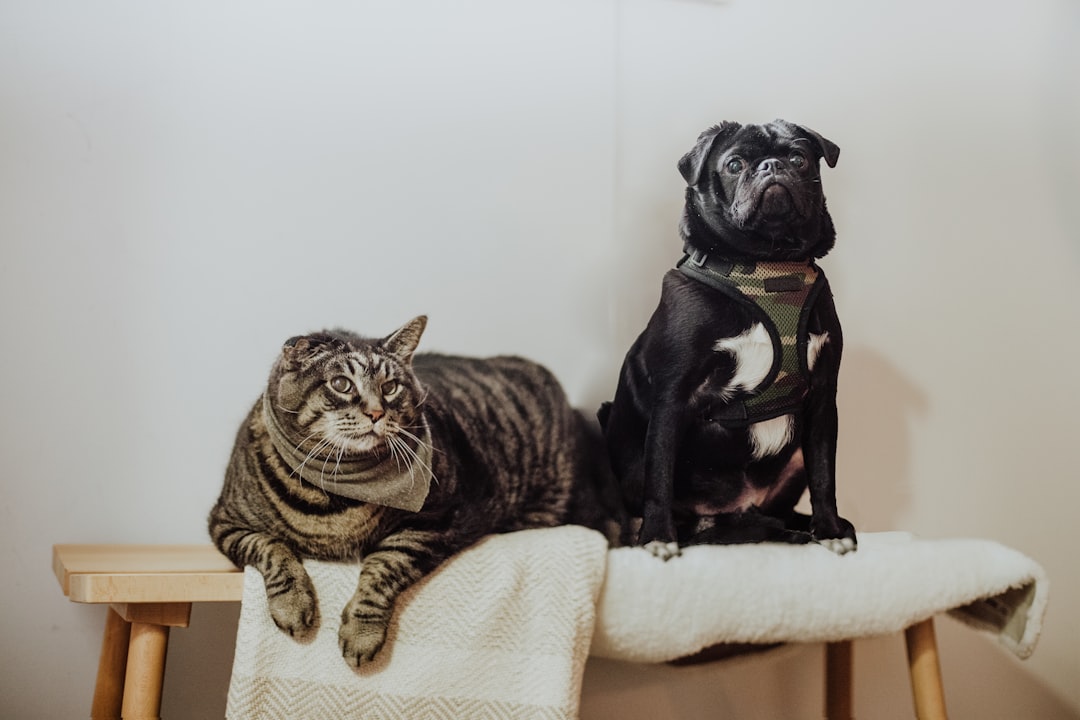Have you ever found yourself wondering, "Why does my dog stare at me?" This intriguing behavior can stem from various reasons, reflecting how dogs communicate their feelings and needs. Understanding the nuances behind your dog’s gaze not only deepens your bond but also enhances your ability to respond to their emotions effectively. From expressing affection to signaling a need for attention, a dog’s stare offers valuable insights into their world. By learning to interpret these cues, you can foster a stronger, more rewarding relationship with your furry friend.
Understanding the Reasons Behind Your Dog’s Stare
If you’ve ever found yourself asking, "Why Does My Dog Stare at Me?" you’re not alone. Dogs use eye contact to communicate and express their emotions. Here are some reasons behind this intriguing behavior:
- Seeking Attention: Dogs may stare to get your attention. They might want playtime, a walk, or even a treat!
- Expressing Affection: Staring can be a form of bonding. Your dog sees you as a companion and their gaze reflects trust and love.
- Observing Behavior: Dogs are highly attuned to human actions. They may watch you closely as they learn from your behavior or await cues.
Additionally, eye contact can serve as a calming signal. A steady gaze may indicate your dog feels safe with you.
To better understand your furry friend, consider the context of their stare. Pay attention to their posture and overall demeanor. Recognizing these subtle cues enhances your bond and answers the question, "Why Does My Dog Stare at Me?" with clarity and compassion.

The Role of Eye Contact in Dog Behavior
Eye contact plays a crucial role in canine communication. Understanding why does my dog stare at me can help strengthen the bond you share. Here’s how eye contact impacts your dog’s behavior:
Expressions of Affection: Dogs often use eye contact as a way to express love and trust. Direct eye contact can signal that they feel safe and comfortable around you.
Social Interaction: Just like humans, dogs use their eyes to engage with others. When your dog stares at you, it may be asking for attention or companionship.
Command Understanding: Eye contact often indicates that your dog is focused and awaiting your commands, showcasing their eagerness to learn and respond.
In comparison, here’s a quick breakdown of the differences in eye contact based on context:
| Context | Meaning |
|---|---|
| Friendly Stare | Affection, trust |
| Prolonged Gaze | Attention-seeking behavior |
| Rapid Blinking | Possible discomfort |
Understanding these cues adds depth to why does my dog stare at me. By acknowledging their gaze, you can respond more effectively to their needs and emotions, enhancing your relationship further.
How Dogs Use Staring to Communicate Needs
Dogs often utilize staring as a powerful form of communication. Understanding the nuances of this behavior can enhance your bond with your furry friend. Here are several ways in which dogs use their stare to express their needs:
Attention Seeking: Your dog may stare at you when they want your attention. This could be for playtime, affection, or simply to be near you.
Hunger Signs: If your dog fixes their gaze on you, they might be alerting you that it’s mealtime. They learn that staring often results in food.
Bathroom Breaks: A direct stare may indicate your dog needs to go outside. They quickly learn that this behavior prompts a response from you.
Playtime Cue: When your pup gazes intently, they may be inviting you to engage in fun activities like fetch or tug-of-war.
Seeking Comfort: A soft gaze can signal that your dog feels anxious or distressed, seeking your reassurance.
In conclusion, when pondering "Why Does My Dog Stare at Me," remember that it often signifies deeper emotional communication, helping you better understand their needs.
The Emotional Context of Your Dog’s Gaze
Understanding why does my dog stare at me goes beyond mere curiosity; it’s deeply rooted in emotional communication. Your dog’s gaze can convey a multitude of feelings, including:
Affection: A soft, gentle stare often indicates love and trust. When your dog gazes at you with relaxed eyes, it signifies a strong emotional bond.
Anxiety: Conversely, a direct, unblinking stare accompanied by a tense body may suggest stress or fear. In such cases, your dog seeks reassurance.
Excitement: If your dog stares intensely during playtime or when anticipating treats, this gaze reflects eagerness and joy!
Attention Seeking: A focused stare paired with whining or pawing indicates a desire for attention or specific needs, such as food or playtime.
When assessing why does my dog stare at me, consider the context. What’s happening around you? Pay attention to your dog’s overall body language and emotional state.
By tuning into these emotional cues, you can strengthen your mutual understanding and enhance your relationship with your furry friend!

Assessing Your Dog’s Staring Behavior
When you ponder, "Why Does My Dog Stare at Me," it’s essential to evaluate the context of their gaze. Not all stares are equal; they can convey various meanings based on the situation. Here are key factors to consider:
Duration of Stare:
- Short Gaze: Often a playful invitation or curiosity.
- Long Gaze: May indicate a desire for attention or a need.
Facial Expressions:
- Relaxed Ears: Comfort and trust.
- Tensed Ears: Alertness or anxiety.
Body Language:
- Relaxed Body: Your dog feels safe and content.
- Tense Body: Possible stress or discomfort.
Situational Context:
- During Training: They may seek guidance.
- Around Food: Expectation for a reward.
Understanding these indicators can clarify the question, "Why Does My Dog Stare at Me?" Each gaze tells a story about their feelings and intentions. Observing and interpreting these behaviors enhances your bond and ensures their emotional well-being. Watching for signs helps you respond appropriately, fostering trust and love between you and your furry friend.
When Staring Becomes a Sign of Stress
While a dog’s stare often signifies affection or curiosity, Why Does My Dog Stare at Me also entails the potential for stress. Recognizing the signs of stress in your dog can enhance their well-being. Here are key indicators to look for:
- Body Language: Watch for a lowered body posture, tucked tail, or raised hackles. These can indicate anxiety or discomfort.
- Ears Position: Ears pinned back against the head can suggest fear or submission.
- Nose Licking and Yawning: These behaviors often indicate stress in dogs.
Comparison of Normal vs. Stressful Staring
| Behavior | Normal Staring | Stressful Staring |
|---|---|---|
| Body Posture | Relaxed and upright | Crouching or tense |
| Tail Position | Wagging or neutral | Tucked or stiff |
| Gaze Duration | Brief and soft | Prolonged and intense |
If your dog stares at you with these accompanying signs, it’s crucial to address their feelings. Understanding Why Does My Dog Stare at Me requires paying attention to these signals to foster a safe environment and reduce stress.
How to Respond to Your Dog’s Staring
When your dog locks eyes with you, it’s crucial to understand how to respond appropriately. Remember, Why Does My Dog Stare at Me can often signify a need or desire for attention. Here are some effective ways to respond:
- Acknowledge Their Gaze: Gently return the stare and express warmth. This reinforces their feeling of connection.
- Assess Their Needs: If your dog seems attentive, consider what they might want:
- Food or Water: Have they eaten?
- Playtime: Are they bored and needing stimulation?
- Affection: Dogs thrive on love and reassurance.
- Use Commands: If your dog stares while you’re engaged in an activity, use basic commands (like “sit” or “stay”) to redirect their focus, reinforcing good behavior.
By understanding Why Does My Dog Stare at Me, you can enhance your bond and build trust. Responding positively not only meets their needs but also strengthens your relationship. Ultimately, effective communication is key to a happy and healthy partnership with your furry friend.

Enhancing the Bond Through Understanding Canine Signals
Understanding your dog’s behavior, especially the question, "Why Does My Dog Stare at Me," is essential for strengthening your bond. Dogs communicate through various signals, and recognizing these can lead to a deeper connection. Here are some key insights:
- Build Trust: Eye contact is a sign of trust. When you hold your gaze, your dog feels more secure.
- Respond to Needs: If your dog stares, it might want food, playtime, or a bathroom break. Responding promptly helps reinforce your bond.
- Engage in Activities: Regular play and training sessions offer opportunities for eye contact and communication, honing your understanding of each other’s signals.
| Staring Behavior | Potential Meaning | Recommended Response |
|---|---|---|
| Soft Gaze | Affection and trust | Greet with a gentle touch |
| Intense Stare | Seeking attention or signaling discomfort | Assess their needs and respond |
| Quick Glances | Curiosity or interest | Engage with a toy or praise |
In summary, when asking "Why Does My Dog Stare at Me," remember that each gaze is an opportunity to enhance your bond through love, trust, and understanding. Fostering this communication will not only satisfy your dog’s needs but will enrich your relationship.
Frequently Asked Questions
Why does my dog often stare at me?
Dogs are known for their expressive eyes and their ability to communicate through non-verbal cues. When your dog stares at you, it can indicate a range of emotions and intentions. One primary reason is affection; dogs often gaze at their owners as a sign of love and trust. Additionally, they may be seeking your attention or asking for something, like food or playtime. Staring can also be part of their instinctual behavior, as they are naturally inclined to observe and read their humans’ body language.
Is my dog staring at me a sign of aggression?
While a direct stare can sometimes signal aggression in dogs, it greatly depends on the context. If your dog maintains a relaxed posture, wagging tail, and playful demeanor, it’s usually a sign of curiosity or affection. However, if combined with tense muscles, bared teeth, or growling, then it may indicate discomfort or aggression. It’s important to observe the overall body language and environment when interpreting your dog’s stare to ensure you understand their true feelings.
What should I do if my dog stares at me intently?
If your dog is staring at you intently, first assess the situation. If they’re calm and relaxed, it likely means they’re waiting for your command or acknowledging you with affection. You can respond positively by giving them a command, treating them, or engaging in play. If their stare seems demanding or stressful, ensure they have had enough exercise, mental stimulation, and attention. Redirecting their focus with toys or activities can also be helpful.
Can a dog’s stare indicate they are in pain?
Yes, sometimes a dog’s stare can be a sign that something is wrong, including pain. If a dog is staring at you with a vacant expression, or if they’ve lost interest in their usual activities, it might indicate discomfort. Unlike humans, dogs may not vocalize pain overtly, so it’s crucial to pay attention to changes in behavior. If the intense stare seems out of character and is accompanied by other signs like limping, lethargy, or changes in appetite, consulting a veterinarian is highly advised.



